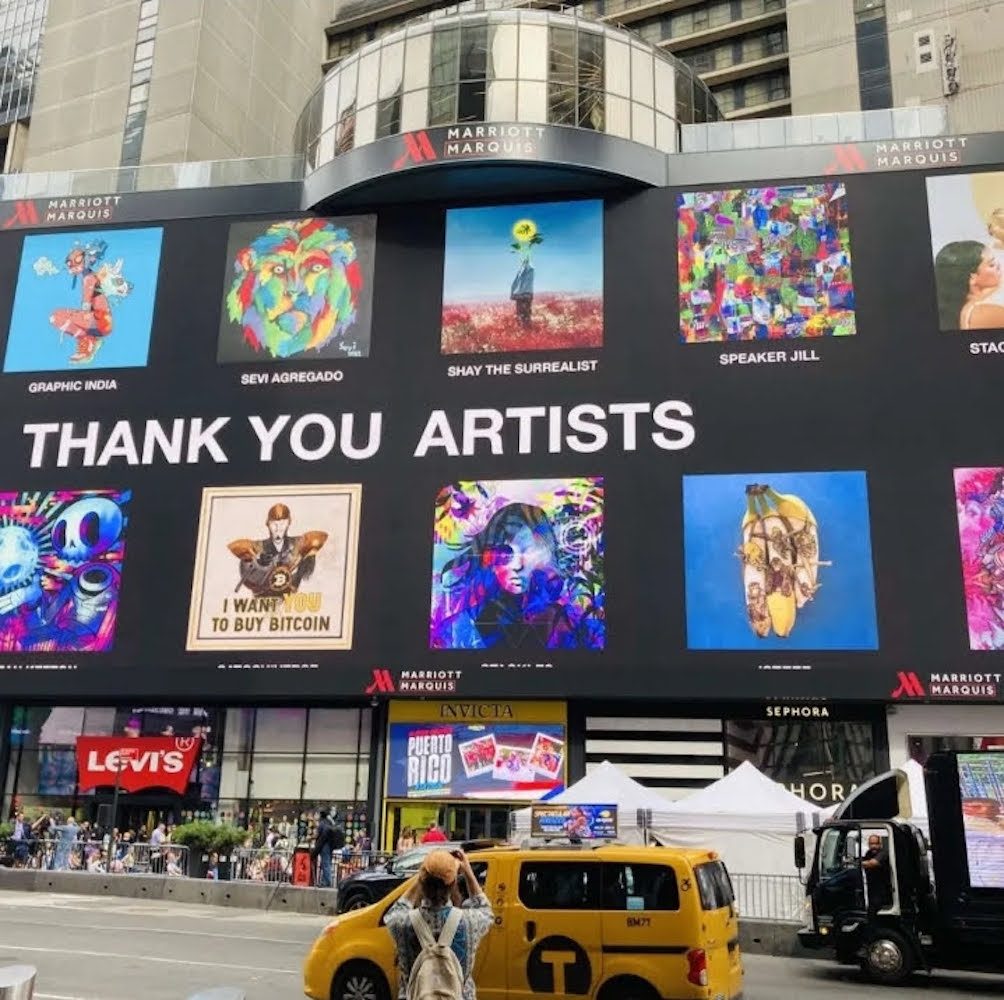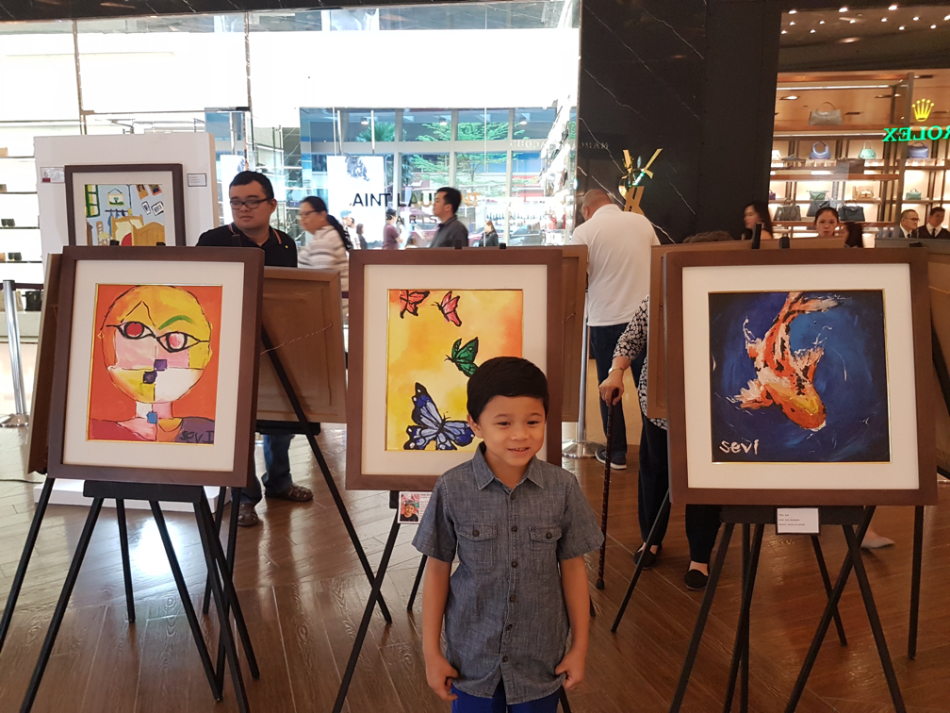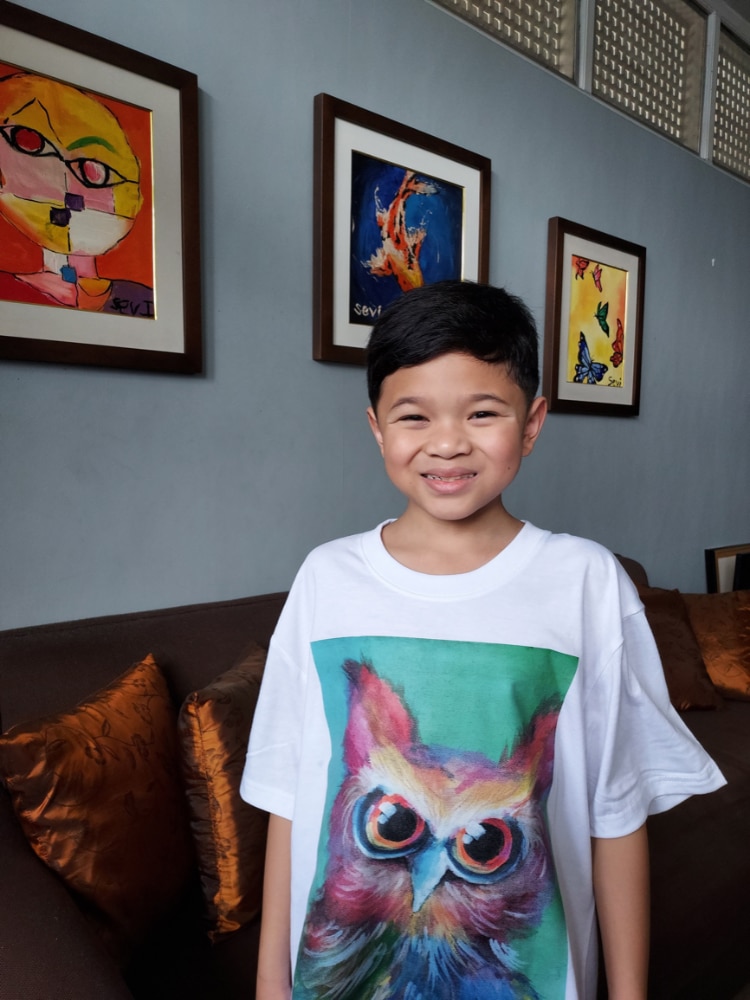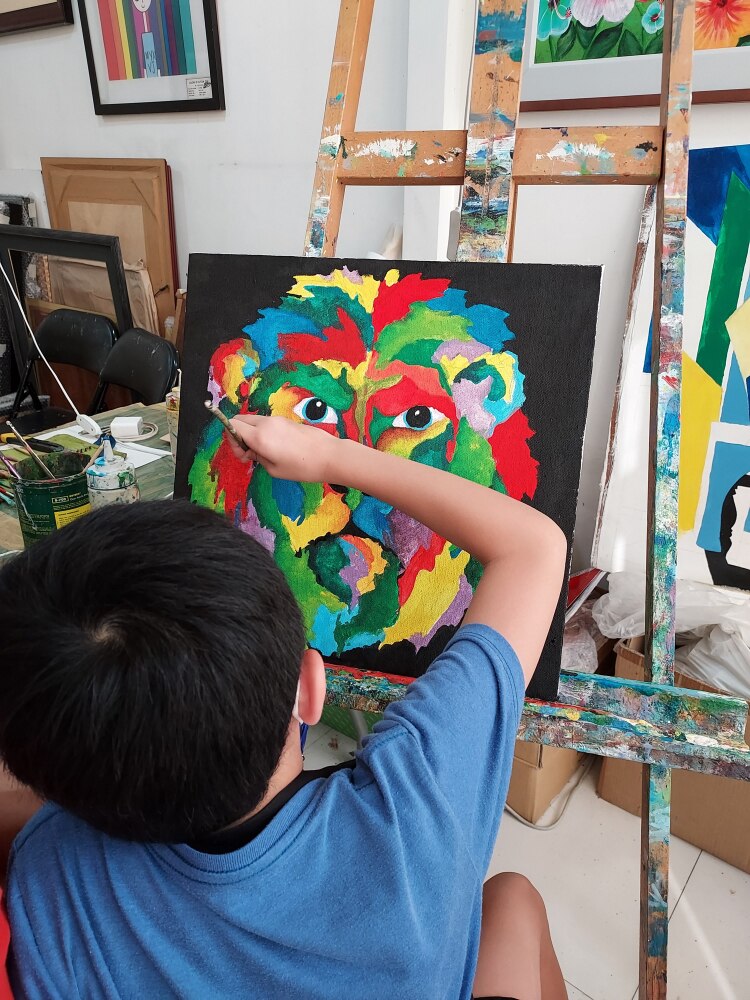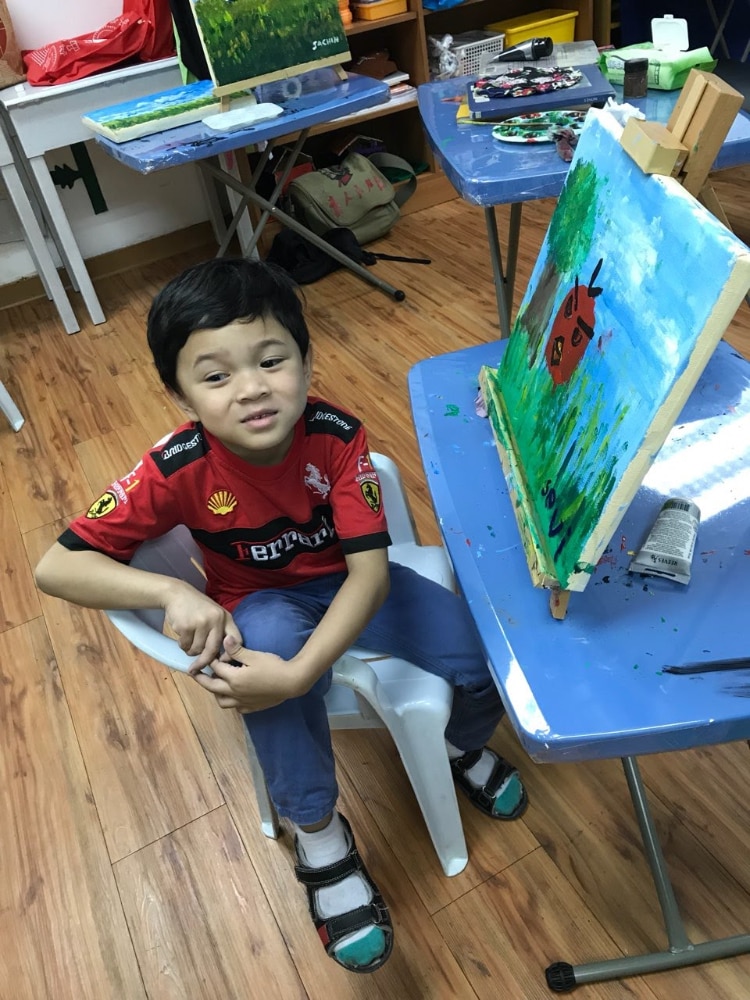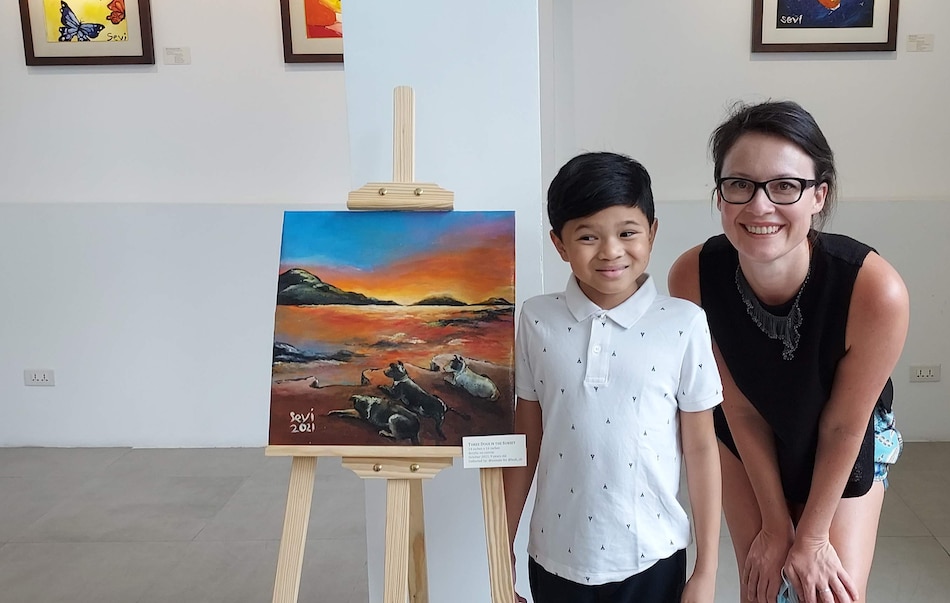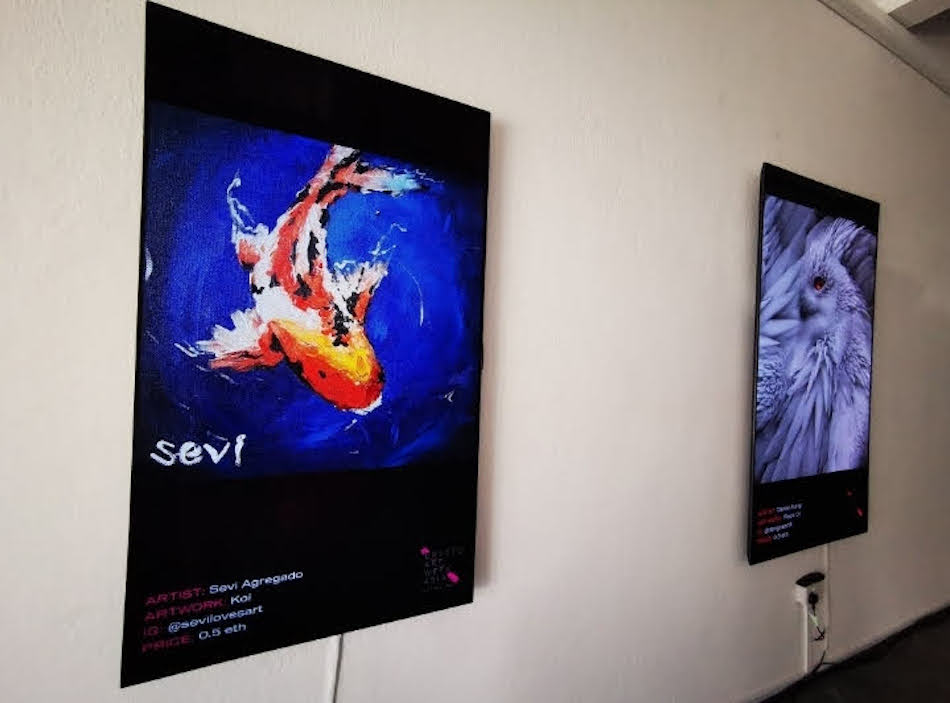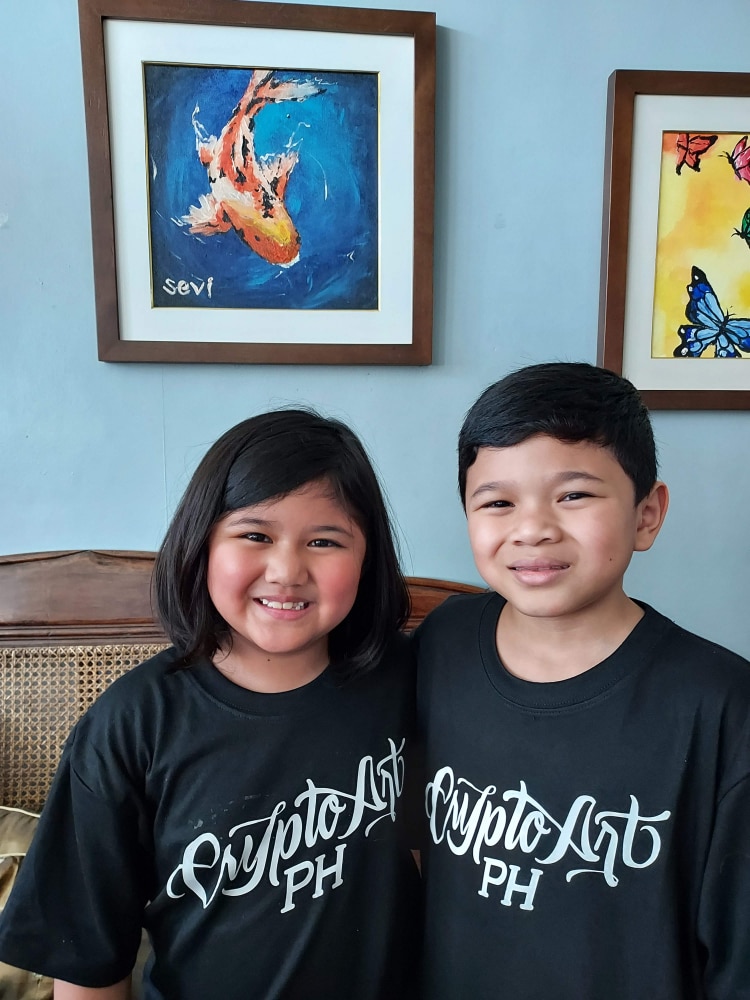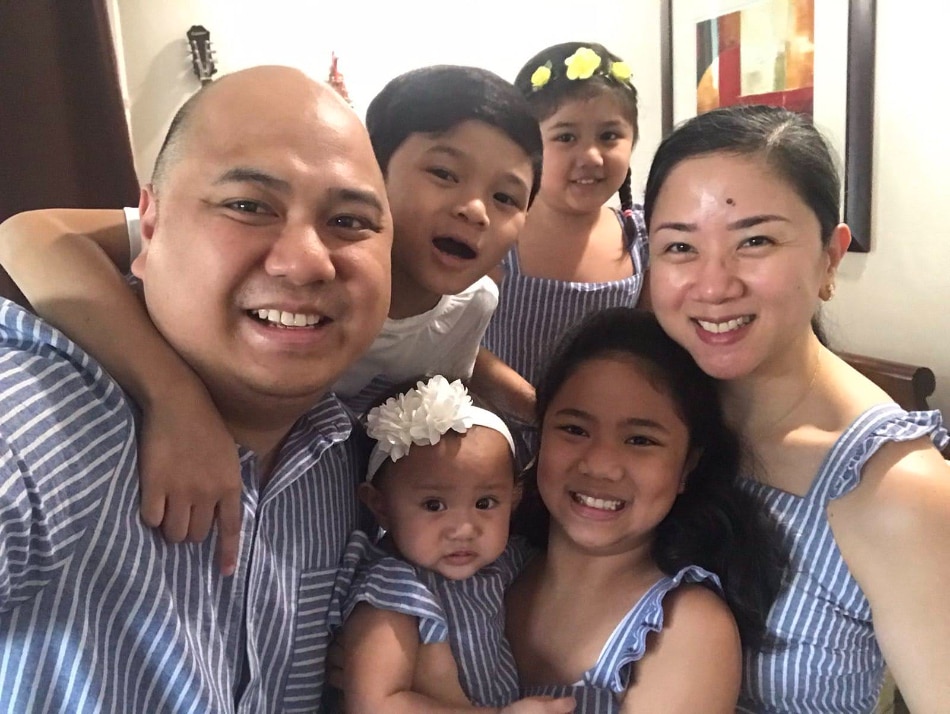This 10-year-old artist with autism is a rising NFT star
The works of a 10-year-old boy with autism are featured alongside those of trailblazing crypto artists from the Philippines and Singapore in a crypto art exhibition happening this month. Sevi Agregado is the only kid in the roster of artists that includes noted illustrator and crypto entrepreneur Luis Buenaventura, photographer, singer and visual artist Raymond Lauchengco, graphic designer and illustrator AJ Dimarucot, and painter co-founder of CryptoartPh Jopet Arias.
Sevi is showcasing four of his paintings at Galeria Paloma’s exhibition titled “1/1” (read: one of one) to be held at Power Plant Mall in Rockwell, Makati beginning September 30 to October 4, and online on NFT art platform Foundation starting September 23. The event is mounted in conjunction with the largest regional crypto art event, Crypto Art Week Asia.
Sevi’s growth in the art scene has been nothing short of remarkable. Since he started painting five years ago, his works have been featured in several onsite and online shows. The boy had his first virtual exhibit at Art Fair Philippines last year. His NFTs were featured in physical galleries in Singapore and Chicago for Crypto Art Week Asia 2021 and were also displayed at Times Square in New York last June for NFT.NYC. His talent also got the attention of Vogue Singapore and The Straits Times Singapore. Sevi, the country’s first and youngest known crypto artist, has sold several of his physical paintings, commissioned works, and NFTs on the metaverse.
“These virtual events have been really amazing for Sevi’s growth because we never thought that his art would reach all over the world,” says Sevi’s mother, April, who still can’t quite believe the extent of her son’s accomplishments. To think that eight years ago, she and her husband, Johncy, didn’t know what the future holds for their little boy.
Sevi, the second among four children, was diagnosed with autism when he was two years old. “Doc, how come Sevi is not talking so much yet?” April remembers asking the family’s pediatrician. In that checkup, the doctor identified possible signs of developmental delay and recommended they consult a developmental pediatrician for further assessment.
The Agregados heeded the doctor’s advice and initial findings showed Sevi has a speech disorder. But after going through a comprehensive assessment, they found the boy’s condition to be more than a simple developmental delay. “The doctor set a box of tissues beside me, which was an indication na the news is not great,” recalls April.
Aside from having global developmental delay or GDD (meaning, he shows delays across several areas of development), Sevi is also diagnosed to have autism (a developmental disorder affecting physical, social, and language skills).
“It was tough for me and my husband in the beginning,” April tells ANCX. Because she was taking medicine for gestational diabetes, all sorts of questions crossed her mind: “Did I do something that caused it? Was it something I took? Did I accidentally inhale something? Did I not take care of myself enough?”
“There was a lot of that guilt in the beginning,” she says. “There was sadness.”
But after finding out their son’s condition, the Agregados did not waste time in providing the necessary interventions. At age two, Sevi started to go to therapy, and at age five, they enrolled him to art classes offered at the therapy center. “We also enrolled him in gymnastics and football and his teachers were actually very happy with his performance. But it was only art that Sevi wanted to continue,” says April.
In our interview, Sevi tells us he likes art because “it’s fun” and “you can make anything.”
“The way I see it, art is something that a person with neurodevelopmental disabilities can do without any expectations as to the outcome. Unlike for speech or even any subject in school, there’s an expected outcome or expected answer. With art, if you think about it, you can do whatever you want. And it’s your way of expressing yourself,” says April.
Sevi’s very first art piece depicted an image of a tree in a field. At that time, he was very much fascinated with Angry Birds and insisted on putting a red angry bird on the painting. “We’re like, ‘okay, it’s cute,’” recalls April, smiling. But as weeks progressed, Johncy and April were pleasantly surprised with the changes in their son’s works. They thought, “Wow may potential siya.”
Normally, Sevi would paint whatever interests him at a given moment—whether it’s an image from a TV show he watched, a game on his gadget, a topic that caught his fancy at school. “There was one time he was very much into this show on Netflix called ‘Grizzy and the Lemings’ and he wanted to paint a bear,” says April. “There was one time they were talking about smores in class and he wanted to make smores and paint smores.”
Sevi’s creative process starts off with a simple idea—say, an animal. April will look for reference materials and Sevi will make his own spin on the subject. “He’s doing a lot of colorful pieces lately, and they’re usually set against a dark background,” April observes. Examples include the piece shown on the Times Square billboard which featured the image of a lion, and his featured works in the Galeria Paloma event this month.
Sevi says he likes to paint all sorts of stuff “everything and anything—sea creatures and nonliving things.” At the time of our interview, he tells us he would like to paint a zebra. His primary medium is acrylic on canvas.
The young artist attends two-hour art therapy sessions in a gallery in Kapitolyo, Pasig once a week. Typically, he’s able to finish a piece in one session. But sometimes he does complicated pieces that take him about two or three sessions to finish. “If it’s a subject that he really likes, or he’s very excited about, he can do it in an hour and a half or less, kasi hyperfocused siya e,” says April.
His teachers let Sevi do his thing and provide guidance and reminders as needed. They would tell him, for example, not to make the canvas too wet or not to use too much paint. “Sevi’s teachers are very proud of him, kasi siya talaga ang gumagawa ng strokes. Ayaw ni Sevi na somebody else is touching the canvas,” shares April. “After the teacher has demonstrated one or two strokes, sasabihin ni Sevi, ‘Okay, let me try.’ Unlike others na kailangan pa hawakan ang hand, ayaw ni Sevi na hahawakan siya. He’s very quick to do that.”
Sevi’s teachers are happy the Agregados started their son early in the arts. At the moment, he still works with reference materials but they predict the boy will soon be able to work from his own imagination. His creative development, they say, has been remarkable.
But for April, it’s just a bonus that Sevi has been producing beautiful art. The biggest benefit, she says, is that art has allowed Sevi to express himself and develop neurodevelopmentally. “He’s receiving instructions from somebody who’s guiding him and because of that, he has to understand the instructions and translate them onto the canvas. If he has questions or clarifications, he has to be able to express that to the instructor. So really painting has improved him developmentally, aside from artistically,” she says. “We really feel that because of art, Sevi has improved his communication skills, his concentration. He’s able to sit still for two hours—that’s hard even for ordinary people like us. Art really catapulted his development.”
April says having a younger sibling has also greatly helped Sevi. Because he has GDD, he’s two years delayed in terms of his development, and so he and his seven-year-old sister, Lexi, practically grew up and developed their skills and capabilities at the same time.
With Sevi, it’s been a colorful 10 years for the Agregados. April admits supporting a child who’s differently-abled has been quite challenging. “Even if Sevi didn’t have autism, it’s tough to be a parent on Twitter—you know, sharing your kid’s story, opening your life up to strangers,” she admits. “And as the curator and as the voice of the kid, it’s a lot of responsibility, and also a lot of apprehension and anxiety on our part because you’re in a space where there are so many established artists.”
In the beginning, she admits they wanted to step back because there’s a financial aspect to Sevi being an artist. “Some are saying it’s creepy for parents to be sharing and selling their kids’ work,” she says. But April says they only have their child’s best interests at heart. “Thankfully we didn’t need to touch the funds that we’ve been able to earn from the sales of his work. But we are comfortable with the knowledge na kung kailangan, there’s that fund that we can use for him. Because he’ll need therapy for a very long time.”
April says their biggest takeaway from this journey is to take your doctor’s advice and be open to the possibilities of how art or any other activity can help your child. “Had I not heeded the pediatrician’s advice to seek further help, we wouldn’t have caught the diagnosis early on and we wouldn’t have gotten the help that Sevi needed,” she says. “I have heard stories of parents being in denial that they delay having the child go through therapy. Then by the time they start, mas matanda na ang child and already set in his ways, so it’s harder to help him. Sayang ang time.”
April also advises parents to expose their children to different activities so they can discover and develop their full potential. As for Sevi, he has a pretty straightforward advice to kids who would like to become artists like him: “Just do it!”
Photos courtesy of April Agregado
